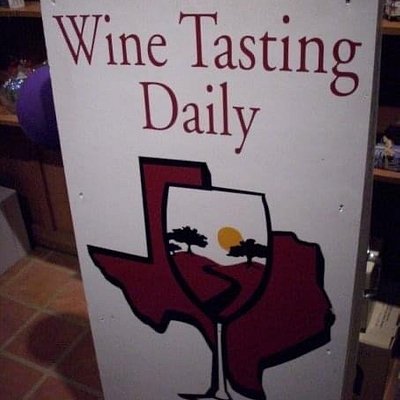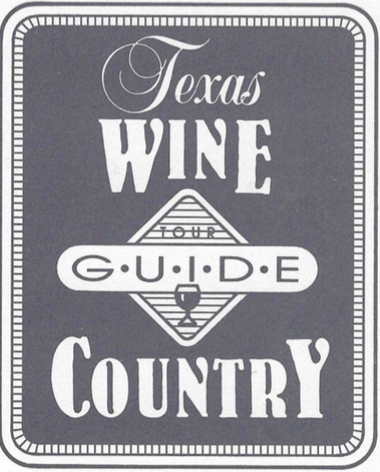
Wine, Texas, and the Camelot Project
The Jim Hightower Department of Agriculture (1983-1991) operated like the Knights of the Round Table. He attracted men and women who were willing to fight the good fight and sent them out into the field to Do Good things for the small farmers, the consumers, the farmworkers and the environment. One group, working through the marketing department, offered valiant services to the fledging grape and wine industry of Texas. This blog tells part of their story. People’s History in Texas will soon be offering a podcast series on the battle against nuclear waste and another series on the fight to regulate the use of pesticides. A short video on pesticides will soon be available. And we are in production on a short video on the success of black farmownership during the 1980s. Be sure to subscribe to this Blog (you will find the button on the right banner) and you will be alerted when new blogs, podcasts, videos are uploaded to our site.

Texas citizens earn buckets of money from wine and wine tourism. It wasn’t always that way. Although Texas has a storied history in saving the French wine industry, Texas A&M horticulturists stubbornly claimed that Texas would never produce quality wines. Too hot, they said.
Entrepreneurs proved them wrong, pointing out the vast number of micro-climates in Texas that would support the grape industry. And the Jim Hightower Texas Department of Agriculture gave the home-grown industry an important push into national and international venues with marketing and exposure.
People’s History in Texas is collecting interviews and doing deep dives into the archives to talk about the innovative support for family farms in the Hightower administration from 1983-1991. In that administration, diversification was seen as the answer to the decline of the family farm and the depopulation of the rural areas.
It’s a little known fact that a Mustang grape hybrid, a Texas grapevine stock, saved the French wine industry in the late 19th century when the phylloxera virus nearly wiped out the European wines. The French wails about the end of civilization reached Thomas Vulney Munson who owned a nursery in Denison, Texas. Munson had spent a lifetime locating and classifying hundreds of native Texas grape stock. Munson grafted French grape vines onto a Texas Mustang grape stock that had immunity to the virus and thereby saved the French wine industry and earned himself a French Legion of Honor medal.
A French hero, perhaps, but in Texas, he was seen as just one more crank. Munson had advocated long and hard for a Texas table grape industry, but sadly, no one listened to him. It wasn’t until the late 1970s that Texas growers began experimenting with grapes. Texas as every one knows is suitable only for corn and cattle and cotton. Texas A&M agricultural academics pontificated that the weather would, sadly, not permit the growth of the classic French grapes, those very grapes that were saved by Munson grafting the Chardonnays, Merlots, the Cabernet Sauvignons, etc., onto Texas Mustang Grape stock.
But, by the 70s, it was also becoming clear to small farmers, that water might be an issue for Texas agriculture in the future. And as an agricultural crop, grapes use less water, less pesticides, and are more valuable per acre than corn and cotton, which tend to be kind of piggish about the water. West Texas farmers were becoming increasingly intrigued in grapes as an alternative crop.
In the 70s, there were a handful of wineries in Texas. One,Val Verde, the oldest was a monastery wine in Del Rio. A few others were experiments in West Texas—Llano Estacado and Fall Creek.
In the 80s, however, grapes for wine acreage exploded, rising to nearly 100. Growth stagnated in the 90s, but took off again in the new millennium Millions of dollars are now earned through annually through Texas wine and Texas wine tourism.
The wine industry prospered in the 80s, largely due to the marketing efforts of the Jim Hightower Department of Agriculture which throughout its eight year existence created and supported innovative ways for small and family farmers to stay on their land.

Hightower was a consistent advocate for Texas wines. He did this in a time before the World Wide Web, a time when marketing was difficult and expensive for new endeavors.
Andy Welch worked in the marketing section of the Hightower administration. “I don’t know of another state agency in Texas…I hazard to say… anywhere in the United States… that did anything like those eight years. I think you could take that eight years, and set it over here and say, ‘This is unlike anything else.’There was nobody who saw how important it was to protect the soil and land, and to consider alternative energy. I don’t know of anybody that talked about farm worker safety before that. I don’t know of anybody that talked about organizing farmer cooperatives like that.”
Rebecca Murphy, who launched the Lone Star Wine Festival, recognized the support that the Hightower TDA gave to the fledging Texas wine industry. “I don’t remember exactly how I met him, but he started going around to retailers who sell wines in Texas, talking to them about Texas wine. I went on some of those trips to talk about why Texas retail stores should be supporting Texas wines.”
“Hightower’s rap was ‘Here is Texas wine, and you should be supporting it. It’s young, people are learning, but it’s going to be to your advantage to know these people. Help them when you can. Give them feedback on what their wines need to be like.’
“You must have seen his poster with the big grape on it, like a New Yorker cartoon, and there was a huge grape right in the middle of it. All these little people all around it, some climbing up ladders on the grape and everything. At the top, it said “The next big thing from Texas.”[if anyone has a copy of that, please let PHIT know about it.]
Karen Haram, a Texas food writer, was supportive of the growing influence of Southwest cuisine and the attention that was paid to the Texas wine industry. She was acutely aware of Alice Waters and the growing movement of local sourcing of food for restaurants and fine dining. And she understood what Hightower was trying to do to support local Texas efforts.
“Jim was really good about getting out the word to other parts of the country. He knew how to drum up publicity with the whole Texas schtick that he had, which was very appealing, and what people were looking for. It always made for an interesting story. That’s what I really remember most about his personality. He was such an enthusiastic promoter, and that he did such a good job getting the word out about Texas foods and Texas wines.”
Andy Welch participated in the lot of the promotions, one of which he still fondly remembers. “We went out to San Francisco, to Alice Waters, and took Bobby and the Aulers. She prepared one of her award-winning menus using Texas wines. A certain Texas wine with the hors d’oeuvres and on through the main meal. It was probably one of the first true exposures of Texas wines outside of Texas. We took them to New York. This was part of the Taste of Texas program, which was another way for those grassroot entrepreneurs who did not have money for marketing. They could hitch on the Taste of Texas bandwagon, whether it was honey, fresh produce, or wine.”